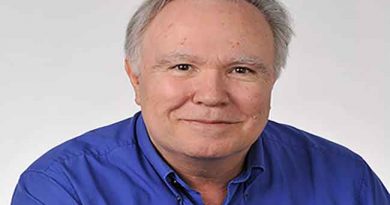Diabetes Health Type 2: Getting a Diabetes Care Plan Together and Then Trusting the Process
Looking back on a 41-year career I see that all of my jobs involved sedentary work. For most of that time I was employed as a public relations manager, writer and editor, so I worked an office job. It was good in some ways but bad when it came to the amount of exercise I got each day.
After college graduation I started working a full-time public relations job at my local hospital on Long Island. It involved writing press releases plus interviewing doctors, nurses and social workers.
My second public relations job was at a Manhattan teaching hospital. Typical days involved writing press releases and magazine articles, interviewing the medical staff, and handling the assorted media inquiries.
Someone had fallen onto the subway tracks in Manhattan and a reporter wanted the patient’s condition. Or there had been a multi-vehicle crash and the press wanted an update. As a public relations person I interfaced between them and the media. It was exciting work and I was thrilled to be assisting in my professional capacity but I wasn’t involved in a regular exercise routine.
When the weather was good I walked from the Long Island Rail Road Station at Penn Station to my office. Those were good one-mile walks and I’d arrive at work feeling exhilarated. In bad weather I took the quick subway ride to my destination.
Despite my good intentions what I did wasn’t enough. Cardio workouts weren’t built into my days and after work I was tired. The extra weight started accumulating in my mid-section my 40s. It happened slowly at first. By age 50 I was 20 lbs. overweight and taking those extra pounds off was challenging.
When my primary care doctor ran my A1C 13 years ago he said that I was pre-diabetic. Two years later my A1C was 6.8, so he pronounced me as Type 2 and started me on Metformin. Unable to tolerate that medication, he switched me to Januvia.
My primary care doctor told me to look for a good health care team to help with my Type 2. It entailed a bit of searching because certain group practices were recommended but weren’t part of my insurance network. Once I found an endocrinologist, nurse and nutritionist who were in-network health insurance-wise – and who I was comfortable with – I peppered them with questions. “When is the best time to check my blood sugar levels?” “Will strenuous exercise affect my blood sugar levels?” “Will my blood sugar levels drop overnight while I’m sleeping?”
They answered each question and offered other helpful tips. My nutritionist said, “Have some protein with each meal otherwise your blood sugar level will increase.” Sure, I’d had protein at lunch and dinnertimes but I hadn’t thought about it for breakfast. “When you get hungry for a snack,” she said, “don’t reach for that candy bar. A handful of almonds or walnuts will be just as satisfying.”
Choosing a diet that was effective with my blood sugar levels was critical. I’ve modified it over the years and now I’ve chosen a low-carbohydrate, high-fat diet. That extra weight is dropping off.
Finding some exercise to do that’s enjoyable was key. Checking my blood sugar levels twice daily, once fasting in the morning and then two hours after dinner, has become a habit. For several years now I’ve kept my log of blood sugar numbers and showed the paper to my endocrinologist.
After I got my whole plan in place I went about my daily routine. I went to church and church socials. I heard guest speakers at the public library. After devouring new books written by my favorite author I couldn’t wait to share my thoughts and impressions with other book lovers.
When I was busy enjoying my various activities I didn’t dwell so much on my blood sugar numbers. Things were going well, my doctors said.
Once I got my Type 2 diabetes action plan in place I found that I can enjoy life. What I mean by that is I don’t always have to be in the driver’s seat. I can sit back, let go and let the professionals that I trust do what they do best. It brings a certain peace knowing that I’m on the right medications for Type 2, my daily numbers are good and my A1C results are good so I can face each day with my usual optimism and curiosity.
Since I trust the process, I can breathe and relax. I can have fun every day and do what I want to do. I am retired and each day means that there are new adventures out there waiting to be explored.
Until I found the right health care team and the right medications, I felt uneasy about my Type 2 diagnosis. In the beginning I felt overwhelmed with information. At other times my doctors didn’t explain things thoroughly enough. Finding the proper balance brought me a degree of tranquility I didn’t have before.
Along the way there were adjustments to be made. Medications needed to be tweaked and my recent move from Long Island to North Carolina meant having to find a whole new health care team. The change was nerve wracking but now I’ve got health care professionals that I trust.
There still may be changes in the years ahead but I will adapt. Moving forward is the name of my game.





Thank you for your article which I read with interest. I am curious though. I’d read many type 2 diabetic have gotten into diabetic remission where meds are no longer needed. I’d also read of many others who only got their conditions deteriorate. Is remission a reality? If so, is it common and a target to aim for?